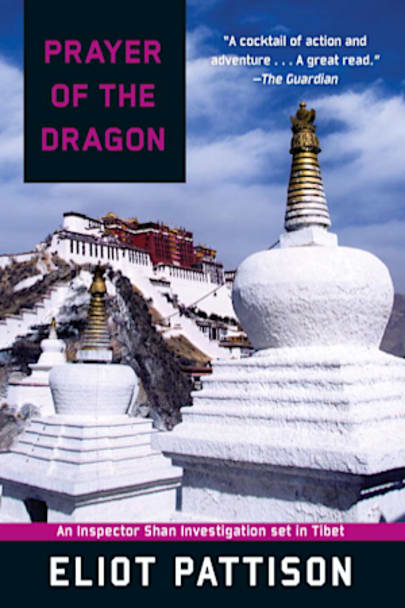Summoned to a remote Tibetan village from the hidden lamasery where he lives, Shan Tao Yun, formerly an investigator in Beijing, must save a comatose man from execution for two murders in which the victims’ arms have been removed. Upon arrival, he discovers that the suspect is not Tibetan but Navajo. The man has come with his niece, seeking the ancestral ties between their people and the ancient … ancient Bon. The recent murders are only part of a chain of deaths. Together with his friends, the monks Gendun and Lokesh, Shan sets out to solve the riddle of Dragon Mountain, the place “where the world begins.”
From the Trade Paperback edition.
more



This book will transport you and immerse you into the geography and culture of Tibet, and it will give you a mystery to solve. There have been two men murdered at a remote mountain shrine, and their hands cut off and taken.
Shan Tao Yun was an investigator in Beijing. He was exiled by the government to Tibet. Shan travels to a remote Tibetan village where an unconscious man is being held as the guilty party in the murders of two men. Shan is accompanied by his dear friends, the illegal lamas (gurus) Lokesh and Gendrun.
Suddenly his two friends Gendrun and Lokesh are taken hostage by the head of the village, who thinks that his safe position is threatened by their arrival. Lokesh and especially Gendrun are in horrible danger, while Shan is forced to find out the truth behind the murders. The suspect is a Navajo man who has traveled to Tibet with his niece, hoping to prove that Tibetan people and the Navajo are ancient relatives. There is a theory that the two may be somehow connected in their long ago past. She is studying the old religious practices and symbols. Now two of their companions are murdered and the niece is gone. The man, Hostene, was seen covered in blood coming down the mountain and then entering the village. Shan must find the killer, and discover the motive for the murders. But the secrets of Sleeping Dragon Mountain are not easily learned, and danger is at every step.
This is not a book you’ll read quickly. The skilled writing slows you to a Tibetan tempo. You’ll have to suspend your fast western ways and surrender to the pensive, almost meditative prose. The narrative is meant to be pondered and savored. You’ll revel in descriptions of the wonder and awe of the mountain and its centuries of history. The perils increase as the story continues and Shan’s journey is filled with danger along the Bon Kora, the ancient path to the summit. All the time Shan is also concerned about his friends who are being tortured back in the village.
He respects his Buddhist friends, their philosophical outlook puts them on an ethereal plane: “It was a lesson often repeated to Shan by Lokesh and Gendrun and the other monks they lived with. What point was there in trying to manipulate events in the outer world, they would ask. The stream of destiny would not change. No matter how many rocks you rearranged in the stream, the water would always replace them and continue its fated course.”
The author paints a picture of the people that shape the fate of Tibet today. He describes the agrarian villagers deprived of their Buddhist roots, the Chinese communist military guided by a bureaucratic policy campaign, Buddhist holy men and sympathetic villagers who revere the mountain and its past role in traditional spiritual pilgrimages, outlaw miners whose profit-making goals threaten devastation, and foreigners seeking to study. The author includes a glossary of terms, as well as an explanation of the basis for his tale.
Does Shan solve the murder mystery? Find the missing niece? Solve the riddle of Dragon Mountain?